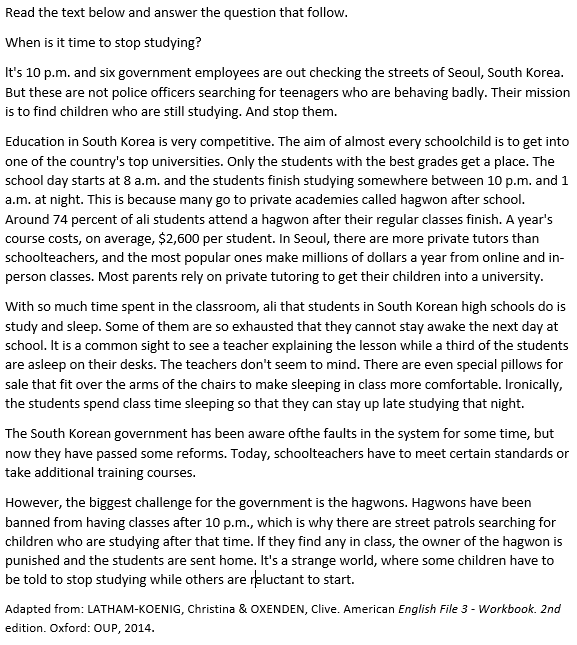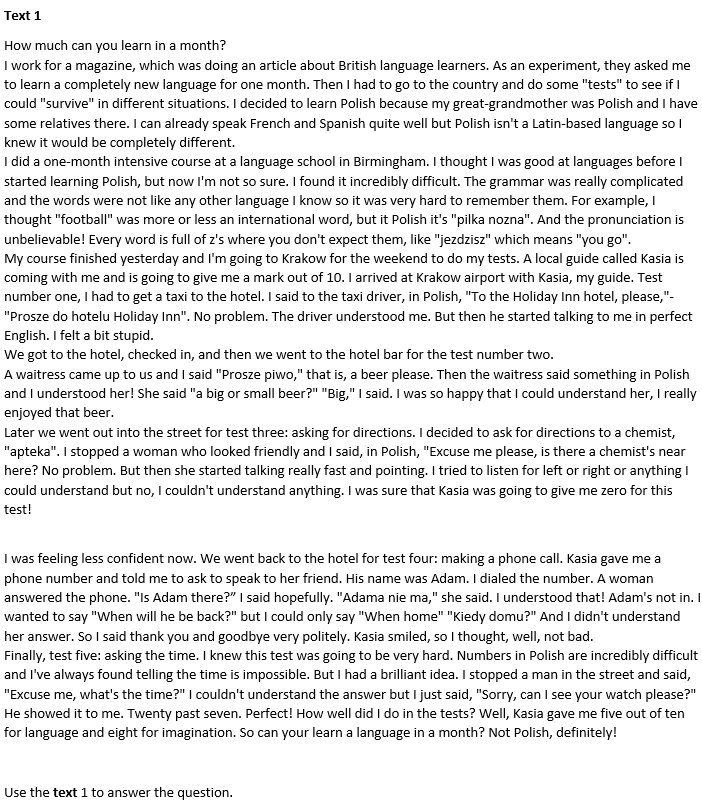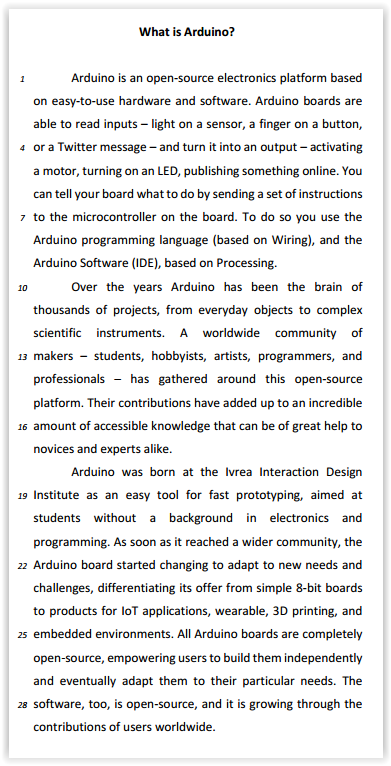A questão refere-se ao texto seguinte:
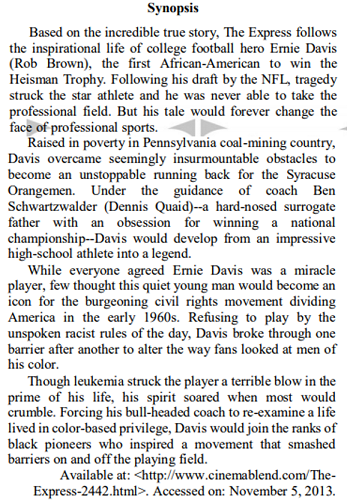
Considering Ernie Davi's life, it isn't possible to say that:
A questão refere-se ao texto seguinte:
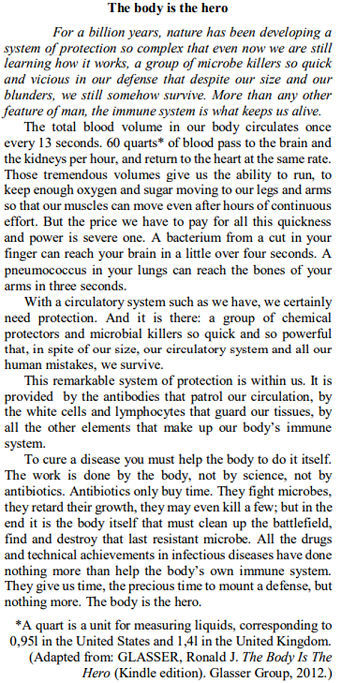
Das afirmações seguintes: I. One quart of blood passes to the brain and the kidneys per minute. II. A bacterium from a cut in your finger can reach your arm in a little more than four seconds. III. A pneumococcus can move from your lungs to the bones of your arms in a very short time.
Text 3A7AAA
Software architecture is a complex topic. Due to its
complexity, our profession has produced a variety of definitions,
each more or less useful depending on your point of view. Here is
a definition from my first book, Journey of the Software
Professional: “A system architecture defines the basic “structure"
of the system (e.g., the high level modules comprising the major
functions of the system, the management and distribution of data,
the kind and style of its user interface, what platform(s) will it run
on and so forth)".
This definition is pretty consistent with many others.
However, it lacks some important elements, such as specific
technology choices and the required capabilities of the desired
system. A colleague of mine, Myron Ahn, created the following
definition of software architecture. It is a bit more expansive and
covers a bit more ground than my original: “Software architecture
is the sum of the nontrivial modules, processes, and data of the
system, their structure and exact relationships to each other, how
they can be and are expected to be extended and modified, and on
which technologies they depend, from which one can deduce the
exact capabilities and flexibilities of the system, and from which
one can form a plan for the implementation or modification of the
system".
We could extend these definitions from the technical point
of view, but this wouldn't provide a lot of value. More than any
other aspect of the system, architecture deals with the “big picture".
The real key to understanding it is to adopt this big picture.
Moreover, while these definitions are useful, they are far too
simplistic to take into account the full set of forces that shape, and
are shaped by, an architecture. In truth, I doubt that any single
definition of software architecture will ever capture all of what we
believe to be important.
Luke Hohmann. Defining software architecture. In: Beyond
software architecture: creating and sustaining winning
solutions. Boston: Addison-Wesley, 2003, p. 1-2 (adapted)
About the definition for software architecture, text 3A7AAA
shows that
Decide whether the following statements are right (C) or wrong (E) according to text I.
It can be correctly inferred from the text that there tends to be presently more female diplomats, as well as diplomats with more diverse social backgrounds, than in 1966.
Considering the ideas and the vocabulary of text II, decide whether the statements below are right (C) or wrong (E).
After all stages of the Civil and Diplomatic Service entrance exams, the number of candidates admitted was around 20.
Decide whether the statements below, which concern the ideas of text II and the vocabulary used in it, are right (C) or wrong (E).
The passage “a wet-behind-the-ears but fully functioning British diplomat" (l.12) indicates that the author's inexperience didn't prevent him from getting a position of responsibility in the Foreign Office.
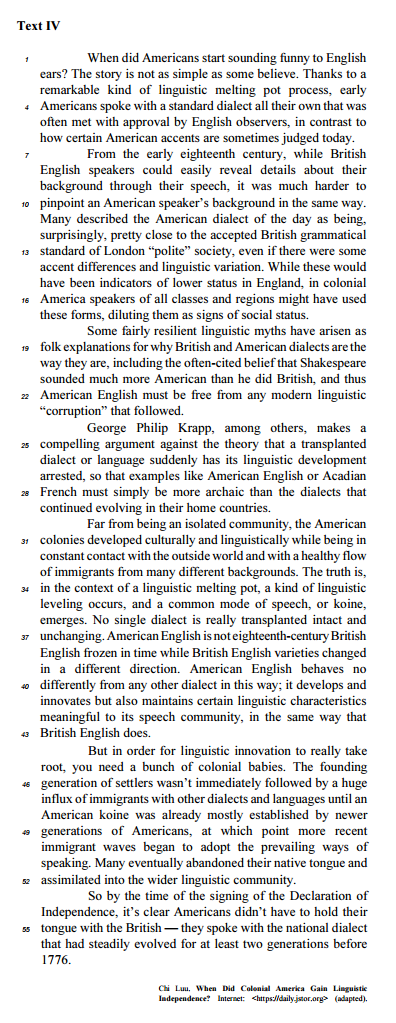
Decide whether the following statements are right (C) or wrong (E) according to text IV.
According to the text, the fact that social origin was not as easy to identify based on the koine of eighteenth-century Americans as was the case with contemporary Britons reflected the early American colonies' egalitarian ethos.
Considering the grammatical and semantic aspects of text V, decide whether the following items are right (C) or wrong (E).
The expression “on a par" (l. 20 and 21) means competing.
Who gets the higher salaries according to the text, schoolteachers o r private tutors?
According to the last paragraph, some students are reluctant to start studying. This means that the students:
Read the text below to answer question.

The excerpt “by allowing laptops to replace pen and paper for exams" (line 2) means that, if Cambridge takes this decision, students:
An appropriate greeting in a formal letter is:
According to the text, judge the sentences below and decide if is it True or False: ( ) The author was feeling less confident in the third test, because she decided to ask for directions to a chemist and did not understand anything. ( ) The author went back to the hotel to making a phone call to talk to Adam, a Kasia’s friend in her for test four. ( ) The last test was incredibly difficult. The test was to ask about the time in the street, but the author had a brilliant idea and asked to a man to show his watch to her. The correct alternative is:
Judge the item that follow according to the text above.
Arduino is useful exclusively to new programmers.






